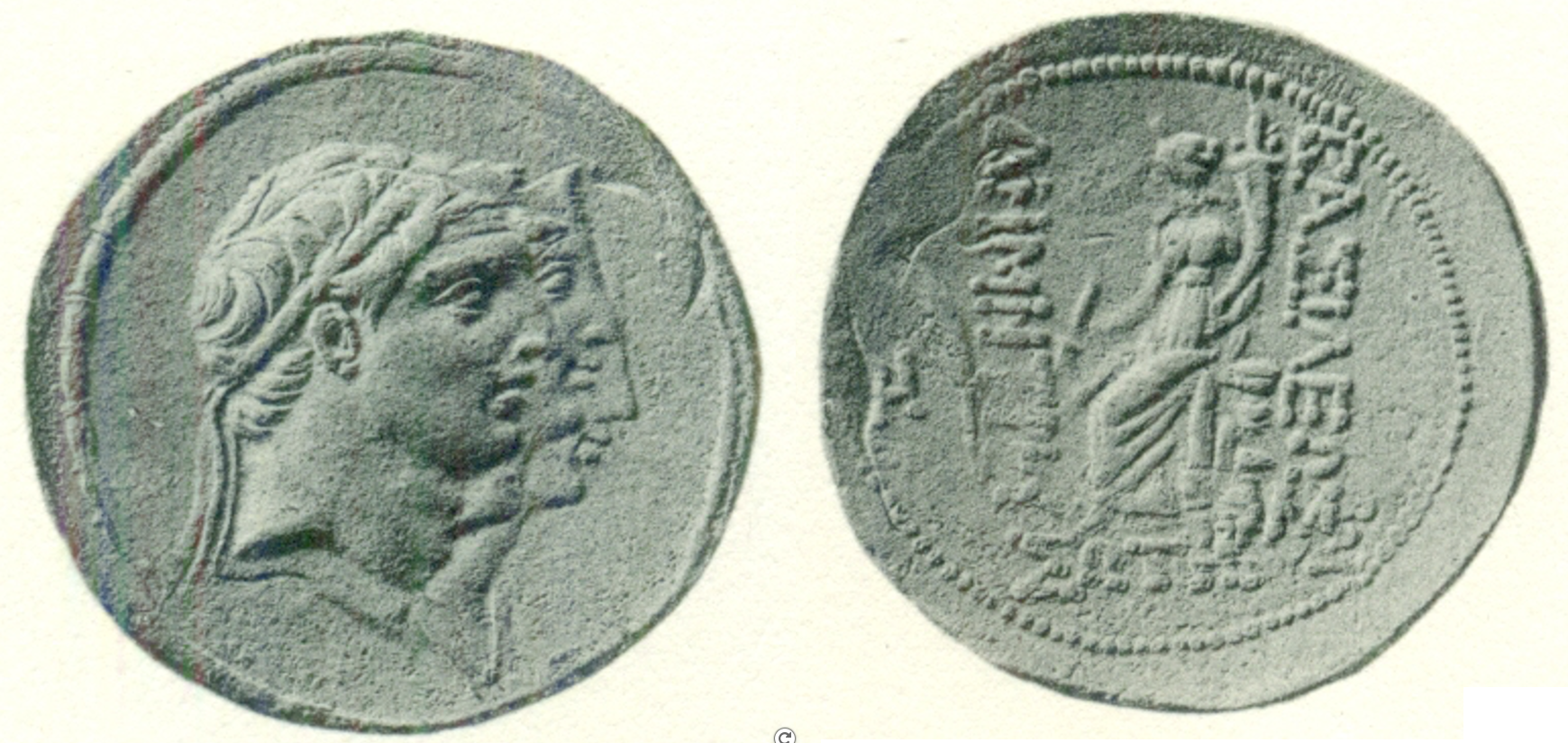161 BCE - 150 BCE | ΒΑΣΙΛΕΩΣ ΔΗΜΗΤΡΙΟΥ ΣΩΤΗΡΟΣ
Overstriking coin
SO 1181 - Seleuceia ad Tigrim over uncertain mint.png
[1]
Description
| ObverseInscription or printing placed on the obverse.:
|
Jugate heads of Demetrios diademed and Ladike draped and wearing stephane right.
|
ReverseInscription or printing placed on the reverse.:
|
ΒΑΣΙΛΕΩΣ ΔΗΜΗΤΡΙΟΥ ΣΩΤΗΡΟΣ (Greek) Tyche seated left, throne supported by winged tritoness, holding scepter and cornucopia. In outside left field, palm and monogram. Border of dots.
|
Mint and issuing power
Chronology
| FromIdentifies the initial date in a range assigned in a numismatic context. 161 BCE toIdentifies the final date in a range assigned in a numismatic context.. 150 BCE
|
hellenistic periodTime period of the numismatic object.
|
Physical description
MetalThe physical material (usually metal) from which an object is made.: Silver 
|
WeightWeight of the numismatic object (in grams). in grams: 16.1716.17 g <br />16,170 mg <br />
|
DenominationTerm indicating the value of a numismatic object. Examples: tetradrachm, chalkous, denarius.: tetradrachm 
|
|
|
|
StandardStandard.: Attic
|
References
| Coin referenceReference of the Coin:
|
Le Rider 1965, p. 142, Collection R. Jameson, pl. LXXXVI, n° 1706.
|
Coin series referenceReference to coin series study:
|
Le Rider 19651Le Rider 1965, p. 142, CSE2CSE, n° 991, SC II3SC II, n° 1689, HGC 94HGC 9, n° 799
|
| Coin series web referenceCoin series web references:
|
|
Description
| ObverseInscription or printing placed on the obverse.:
|
|
ReverseInscription or printing placed on the reverse.:
|
|
Mint and issuing power
| MintIdentifies the place of manufacture or issue of a numismatic object. ᵖ:
|
|
Ancient regionAncient region. ᵖ
|
|
Modern countryModern country:
|
AuthorityIdentifies the authority in whose name (explicitly or implicitly) a numismatic object was issued. ᵖ:
|
|
Chronology
| FromIdentifies the initial date in a range assigned in a numismatic context. toIdentifies the final date in a range assigned in a numismatic context..
|
periodTime period of the numismatic object.
|
Physical description
References
References
- ^ Le Rider, Georges (1965), Suse sous les Séleucides et les Parthes. Les trouvailles monétaires et l'histoire de la ville, Paris, Paul Geuthner, 491 p., 74 pl.
- ^ Hougton, Arthur (1983), Coins of the Seleucid Empire from the collection of Arthur Houghton, Ancient Coins in North American Collections 4, New York, xiv, 122 p., 2 fold. charts, 77 pls.
- ^ Houghton, Arthur - Lorber, Catharine C. - Hoover, Oliver D. (2008), Seleucid coins : a comprehensive catalogue. Part 2, Seleucus IV through Antiochus XIII, 2 v., New York - Lancaster - London, (xxx), 120 p. of plates : ill., maps, tables
- ^ Hoover, Oliver D. (2009), Handbook of ancient Syrian coins : royal and civic issues, fourth to first centuries BC, The Handbook of Greek Coinage 9, Lancaster, lxix, 332 p.

